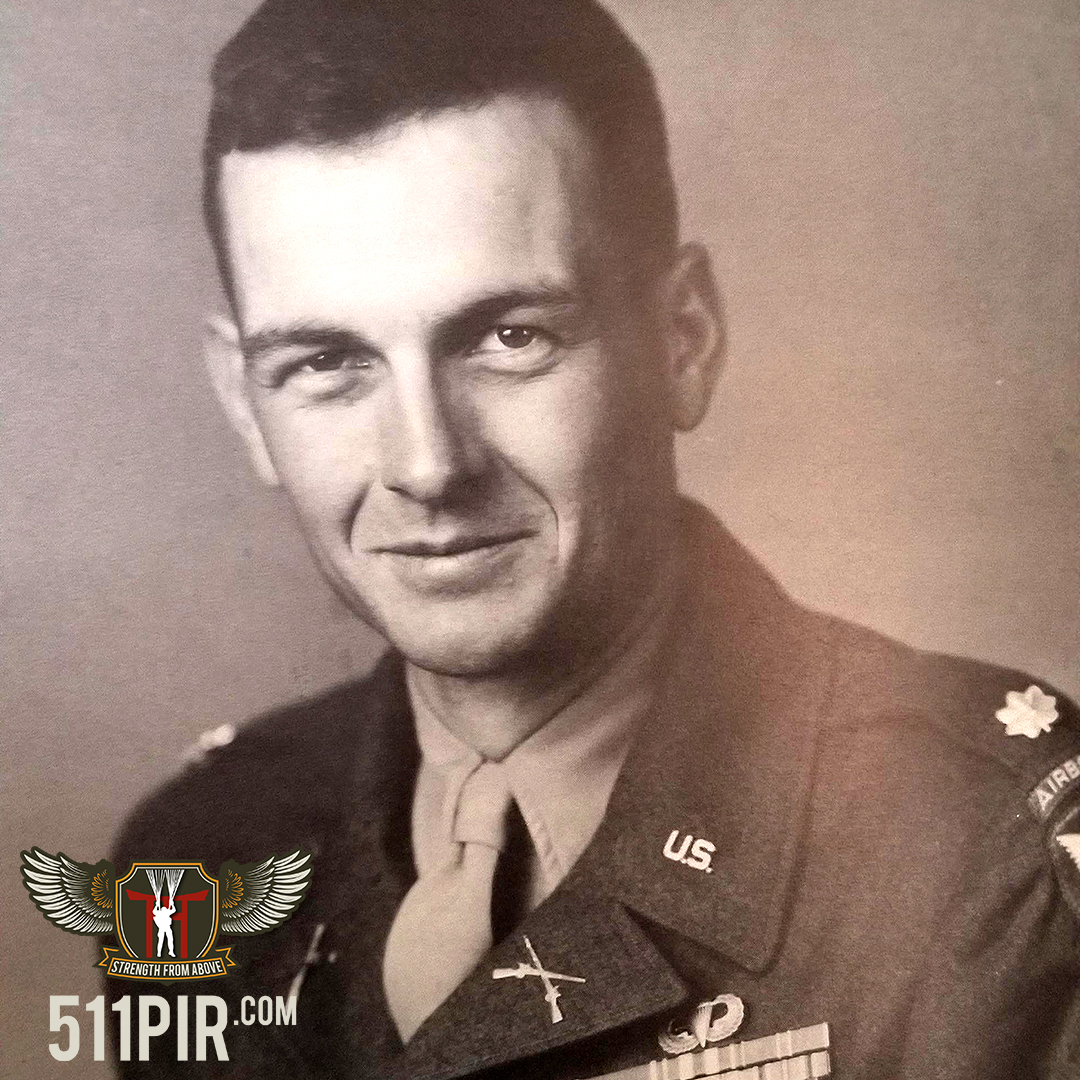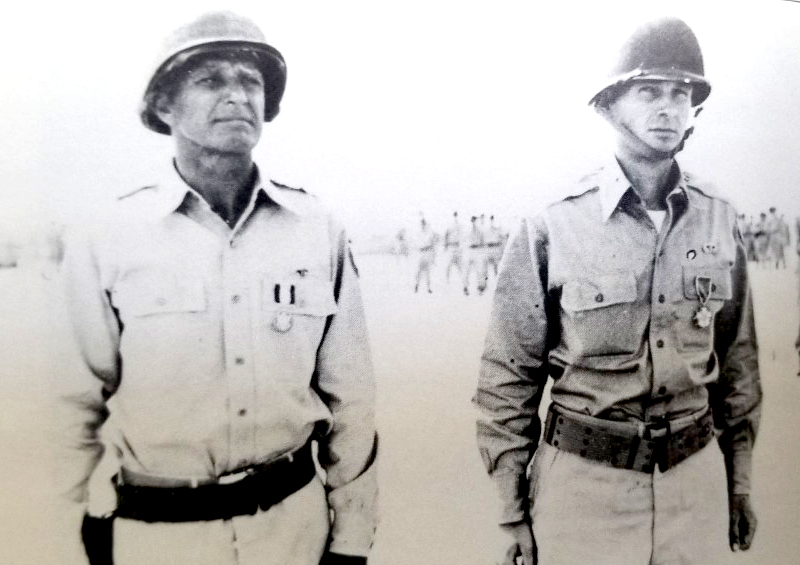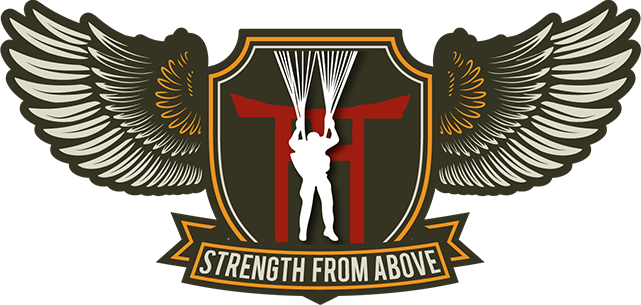LTC Burgess, Henry A.

Commanding Officer, 1st Battalion, 511th PIR
August 22, 1918 - April 4, 1995 (Age 76) - gravesite
Citations (Including WWII, Korea and Vietnam): Silver Star; the Legion of Merit; Bronze Star; Purple Heart; Presidential Unit Citation; American Defense Service Medal; American Campaign Medal; Asiatic Pacific Campaign Medal; World War II Victory Medal; Army Occupation Medal (Japan); Infantryman Badge; Philippine Liberation Ribbon.
Bio:
Much has been written about the role of LTC Henry A. Burgess in the 11th Airborne Division's famous raid on the Los Banos civilian internment camp located near Laguna de Bay on Luzon on February 23, 1945, yet I have found a definitive lack of biographical information written about the man himself. This article is an attempt to correct (albeit abbreviatedly) that dearth of historical background on this great battlefield and community leader.
Henry "Hank" Amos Burgess was born on August 22, 1918 to James H. and Helen M. Burgess. His brother Charles H. Burgess was roughly 8 years older and the two grew up helping their father on the NX Ranch, 25 miles east of Sheridan, Wyoming. The lifestyle taught Henry (and his brother) how to work hard, think projects through, discipline themselves for the tasks at hand, obey directions and much more.
Henry would later declare that, "As far as food and hours spent working in all kinds of weather was concerned, the ranch was as demanding and as tough as the army... My life on a ranch was my best training ground."
The Burgess boys also grew up with a deep love for their country, and the law as their father was a lawyer then District Judge.
While attending school in Sheridan as a young boy, Henry often walked over to the Wyoming National Guard Armory to help care for its 40 horses. This habit was soon joined beginning at age 15 with participation in the guard's rifle and machine gun practice.
Henry graduated from Sheridan High School then enrolled in Harvard University in Massachusetts Henry where he earned a Bachelor's degree in 1940. Prior to his graduation from Harvard, however, Henry spent the summer of 1937 touring Europe, especially Germany where he enrolled in the University of Munich to complete his foreign language requirements (he also visited Austria, Hungary and Czechoslovakia). When it became obvious that that country was headed for war once more, Henry headed back to Harvard in September of 1937 and joined Troop B of the 115th Calvary of the Wyoming National Guard where he served for four years. Since he was in Boston at the time, he did his Basic Training with the 110th Massachusetts Calvary and studied the required texts via correspondence courses during his sophomore and junior years. He graduated from Harvard with a bachelor's degree in 1940 and immediately enrolled in the University of Michigan Law School.
Henry passed the Wyoming National Guard's test and was promoted to 2nd Lieutenant on February 21, 1941. One month later, in March of 1942 the 115th Calvary was activated in anticipation of World War II, so Henry dropped out of law school and headed to Fort Lewis, Washington where the 115th Calvary had been sent. Amidst all the training and demonstrations, the 115th's officers were tasked with performing as "Extras" in the Hollywood film, The Last Cavalryman staring Wallace Berry. Henry also met his future wife Mary H. Hayden, though World War II would, of course, make their courting period difficult. They only had a few initial days together before she had to return to school at the University of Michigan, though they would sporadically write throughout the war. Henry would soon be sent to the Pacific Theater and Mary would join the Red Cross and serve in Europe.
Henry made 1st Lieutenant in February of 1942 and a few months later was sent to a special course for Armored Force Officers. Afterwards he was promoted to Captain on August 25, 1942 where he was given command of Troop E of the 115th Calvary. But in About a year or two after it was called to Federal service, Henry's 115th Calvary Regiment was broken up and its members distributed to other units. The regimental commander LTC George O. Pearson was transferred to the brand new 11th Airborne Division under Major-General Joseph May Swing as Swing's G-2 (Intelligence).
LTC Pearson told General Swing that the 115th Calvary had had some promising officers in it, including CPT Henry Burgess, Nathaniel Ewing, Dave Carnahan who soon joined the 11th Airborne and became known as the "Powder River Gang." Burgess would arrive at the 11th Airborne's new headquarters at Camp Mackall, North Carolina wearing the Oak Leaf of a Major (he was promoted shortly before the 115th was disbanded). General Swing noted that the division had an abundance of Majors, so Henry said he would not be offended by a reduction in rank to Captain again. Swing was impressed by Henry's openness to service so on June 19, 1943 he sent Burgess to Fort Benning's Infantry School for three months until September.
Upon his return to the division, Henry was assigned to the 187th Glider Infantry Regiment and participated in several training exercises, including the famous Knollwood Maneuvers of December of 1943 wherein the 11th Airborne helped prove the validity of the airborne divisions concept AND laid the groundwork for the airborne operations for the D-Day campaign the following June. During the Knollwood Maneuvers, however, Henry rode in a glider that crashed hard, breaking the legs of both pilots, and he vowed to never ride in a glider again.
After the division relocated to Camp Polk, Louisiana, General Swing wanted to set up his own abbreviated parachute ground training school and asked the 511th PIR's legendary Colonel Orin D. "Hard Rock" Haugen to run it. Orin refused, saying that Swing's shorter school would not meet standard requirements and regulations. Instead, General Swing asked MAJ Henry Burgess to run the school with the help of parachute officers from the division's engineers and artillery units.
After the division sailed for Dobodura, New Guinea, the US Sixth Army Headquarters requested that the 11th Airborne provide an operations officer to serve on the planning board for their future airborne operations. This means Henry was able to take part in the planning of the 503rd Parachute Infantry Regiment's famous jump on Noemfoor, New Guinea as well as take part in the amphibious phase of the attack when Hank was attached to the 158th Regimental Combat Team on July 3, 1944. He then joined Task Force Headquarters and was shocked to learn that, with no one consulting him, the 503rd PIR would be dropped on the captured airstrip that was covered by machinery being used to repair the strip. Hank watched the 503rd's paratroopers drop at 400-450 feet and land so hard on the cement airstrip that they coughed up blood while others landed on the scattered equipment, breaking legs and backs in the process.
When Henry returned to the 11th Airborne, he did so with an "acquired" refrigerator that had belonged to Major General Charles Willoughby, G-2 to General Douglas MacArthur (Willoughby wouldn't find who stole his refrigerator for decades). Henry related to the 511th PIR's COL Haugen all that he had learned during the Noemfoor operations, including the need of troopers to quickly engage the enemy when fired on and then move in. Due to his years of experience hunting coyotes in Wyoming, Burgess also reminded the 11th Airborne's officers to stay off the tops of ridges. This last lesson would come in handy in the division's ensuing campaigns for Leyte and Luzon.
I don't want to recount in detail the Angels' bloody and brutal campaigns to liberate those two islands as that could entail articles of book length, hence my labor of love in publishing the book WHEN ANGELS FALL: From Toccoa to Tokyo, The 511th Parachute Infantry Regiment in World War II.
I will saw that Henry was up front much of the time after being promoted to Commander, 1st Battalion, 511th Parachute Infantry Regiment, just before the Leyte campaign from Thanksgiving Day to Christmas Day of 1944. Of the vicious jungle and mountain fighting, Hank later wrote, "You don’t have any fields of fire...You see what you can see anywhere from five, no more than fifteen yards. The sky you don’t see in most areas. It’s like being in a darkened room most of the time."
He would soon play integral roles in the regiment's operations on Luzon, especially the historic Los Banos Raid on an internment camp where over 2,100 men, women and children were being starved to death by their Japanese guards. Their deliverance came at 0700 on February 23, 1945 when the 11th Airborne Division liberated the camp and rescued all the internees and brought them back to safety. As CO of the 511th PIR's 1st Battalion, MAJ Burgess came across Laguna de Bay in the Amtracs and was overall commander of the assaulting force and later noted, "I was appalled at the conditions of the internees. None of us were prepared for what we found."
 Hank (seen in photo to the right on the right of GEN Swing) was award the Legion of Merit for his role in the rescue, but 1st Battalion was sent right back to the lines and the young Major led his battalion through several more major campaigns in southern Luzon before he was assigned to be the 511th PIR's Executive Officer under COL Edward H. Lahti. As the regiment's new XO, Hank was given command of the 11th Airborne Division's Task Force Gypsy in June of 1945, an operation that would be the actual final airborne operation of World War II.
Hank (seen in photo to the right on the right of GEN Swing) was award the Legion of Merit for his role in the rescue, but 1st Battalion was sent right back to the lines and the young Major led his battalion through several more major campaigns in southern Luzon before he was assigned to be the 511th PIR's Executive Officer under COL Edward H. Lahti. As the regiment's new XO, Hank was given command of the 11th Airborne Division's Task Force Gypsy in June of 1945, an operation that would be the actual final airborne operation of World War II.
While Sixth Army's GEN Walter Krueger initially baulked due to his age the twenty-seven-year-old now-LTC Henry Burgess would command the airborne force while COL Lahti remained behind to command the reserve force. When GEN Swing notified Burgess of his promotion to lieutenant-colonel, he gave Hank the same oak leaves he had worn as a Lieutenant Colonel, a memento Burgess cherished until his death.
After Aparri, Hank went with the regiment to Okinawa where they awaited orders to jump onto Japan during the planned invasion of the Empire's homeland. But due to the dropping of the two atomic bombs, Japan surrendered and the 11th Airborne Division was selected to be the first Allied unit to land on Japan when they did so at the Atsugi airfields on August 30, 1945. The Angels only had a few hours to secure the airfield before General Douglas MacArthur landed.
To prep for the landing, LTC Burgess, now the 11th Airborne’s G-3 (LTC Douglas Quandt had been sent back to the states for medical treatment), landed with GEN Swing. Henry then rode with a group of Japanese officers thirteen miles to Yokohama's New Grand Hotel to discuss what would happen when MacArthur arrived (wanting the Japanese to lose face, GEN Swing refused to go). Following the meeting, Burgess stood to leave when one of the Japanese generals grabbed Hank who noted, "Up to that point, no Japanese had ever touched me, although several had tried."
Knowing that he was the only American for thirteen miles, the battle-hardened paratrooper’s reflexes kicked in. Burgess slapped the general’s hand away with his knife then flipped the former enemy around with his left arm around his neck and pressed the tip of his knife against the man’s throat.
Everyone froze. Another Japanese officer quietly informed Burgess that it was military courtesy that the ranking officer leaves the room first. The Silver Star recipient calmly replied, "I am very familiar with military courtesy, and at this time one American major outranks five Jap generals."
Burgess then left the room…first.
In perhaps one of the best stories that describe his character, when GEN Swing and some others tried crossing a bridge in Paranaque, just south of Manila, the enemy opened fire and for some reason, Swing's G-3 LTC Douglas Quandt was left behind. Upon hearing of his friend's missing status, MAJ Henry Burgess gathered some men and made their way to the bridge. Careful to stay out of the enemy machine gunners' sight, Burgess' "squad" found Quandt and brought him safely back to Division HQ. GEN Swing awarded all the rescuers the Silver Star for their efforts, but Henry downplayed the action. He did it for his buddy who was in harm's way, not for any attention or citations.
After the war, the weight of combat leadership was something Henry thought about often. Although he was extremely proud to have served his country, he noted that, "(War) is a dirty, useless business; it is just a great mill for chewing fine able-bodied men into bloody useless wrecks."
In November of 1945, after five years of military service, Henry returned home to the States and on January 19, 1946, after three years and three months apart married Mary H. Hayden in Ann Arbor, Michigan and together they had six children, two sons (Jamie and Sheridan) and four daughters Sarah Louise, Molly, Tyler and Heather. Sarah Louise died while young.
After his wedding day, Henry returned to and and graduated from the Michigan University Law School. He and Mary then went back home to Sheridan, WY to open his law practice where he quickly became a respected member of the community (and made $13 his first month in business). He would practice law for over 40 years and the Burgess family soon purchased a ranch just outside of Sheridan where they raised their children.
In 1950 Henry was elected to the Wyoming House of Representatives and was known as an honest and hard-working politician. In 1950 he introduced HB13, a measure that would raise the minimum wage to $0.75 an hour. He also submitted an amendment that would have changed time-and-a-half pay to hours over 48 hours worked in one week.
In October of 1970, Henry's name was included in a short-list of potential nominees to replace J. J. Hickey, who passed away, as U.S. 10th Court of Appeals Judge.
Henry also served as the Sheridan County Attorney, a Wyoming State Senator, president of the Wyoming Bar Association (where he argued cases before the U.S. Supreme Court), the National Association of the 11th Airborne, president of Whitney Benefits (a charity organization that provided funds for college students), and director of First Interstate Bank.
In addition to his "Life Member" membership in the National Association of the 11th Airborne, Henry was also active in the American Legion, the Elks Lodge, Rotary International, and was a 32nd degree Mason.
For 35 years, Henry and his family lived at Pony Track Ranch at Lower Prairie Dog Creek before they moved back to Sheridan proper and lived at 1808 Fairway Lane, the address of his residence at the time of his death on April 4, 1995 (he died at home). His funeral was held at the St. Paul Episcopal Church with Father David Duprey and Reverend Raymond Clark conducting and presiding.
Col. Henry A. Burgess US Army 11th Airborne WWII Battle of Manila & Raid on Los Banos 1988 Reunion
Jeremy Holm: The Liberation of Los Banos
To learn more about the 11th Airborne Division in World War II, please consider purchasing a copy of our books on the Angels:



